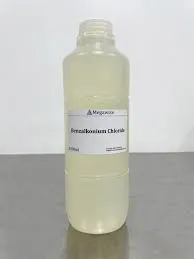flocculant vs coagulant
Flocculants vs. Coagulants Understanding the Differences in Water Treatment
Water treatment is a critical process in ensuring clean and safe water for various uses, from drinking to industrial applications. Within this domain, two key chemical agents play pivotal roles coagulants and flocculants. Despite their similar purposes, they function differently and are used at distinct stages of the water treatment process. This article explores the differences between these two types of agents, their mechanisms of action, and their applications in water treatment.
What Are Coagulants?
Coagulants are chemicals that facilitate the aggregation of fine particles suspended in water. They are typically used in the initial stages of the water treatment process. Common coagulants include aluminum sulfate (alum), ferric chloride, and polyaluminum chloride. When added to water, coagulants destabilize the negatively charged particles, allowing them to collide and bond together to form larger aggregates, known as flocs. This process is influenced by factors such as pH, temperature, and the concentration of impurities in the water.
The primary goal of using coagulants is to reduce turbidity and remove impurities, such as silt, clay, and organic materials. By doing so, coagulants help improve water clarity and prepare it for subsequent treatment processes, such as sedimentation and filtration.
What Are Flocculants?
Flocculants, on the other hand, are substances that promote the agglomeration of the flocs formed during the coagulation process. They are often high molecular weight polymers, such as polyacrylamide and natural organic polymers. Flocculants enhance the settling of the larger floc aggregates by attracting them together and promoting their growth into larger, more easily removable particles.
While coagulants work to destabilize particles, flocculants serve to strengthen the bonds between these particles, increasing the size and mass of the flocs. This action significantly reduces the time required for sedimentation and improves the efficiency of the filtration processes that follow.
flocculant vs coagulant

The Process of Coagulation and Flocculation
In typical water treatment systems, the coagulation and flocculation processes occur in succession. First, coagulants are added to the water in a rapid mixing phase. This action allows for effective particle destabilization. Following this, a slower mixing phase is introduced where flocculants are added. During this phase, the gentle agitation helps to promote the growth of flocs, aiding in their eventual settling.
This two-step process is crucial because if only one type of agent were used, the effectiveness of the removal of suspended solids would be compromised. Coagulants alone may not form sufficiently large aggregates, while flocculants without prior coagulation may not have enough particles to bond, leading to inefficient water treatment.
Applications of Coagulants and Flocculants
Both coagulants and flocculants are essential in various water treatment applications. Coagulants are commonly used in municipal drinking water treatment, wastewater treatment plants, and in industries such as food and beverage, textile, and paper manufacturing. Flocculants are often utilized following coagulation to enhance the efficiency of sedimentation tanks, clarifiers, and filtration systems.
Additionally, these agents play critical roles in managing stormwater runoff and treating industrial effluent, ensuring that environmental regulations are met before discharge.
Conclusion
In summary, while both coagulants and flocculants are vital for effective water treatment, they serve distinct functions within the process. Coagulants stabilize and aggregate suspended particles, while flocculants facilitate the growth and settling of these aggregates. Understanding the differences between the two helps water treatment professionals select the appropriate agents for specific applications, ultimately contributing to cleaner and safer water for all. As water quality remains a global priority, the roles of coagulants and flocculants will continue to be paramount in maintaining water safety and environmental protection.
-
The Power of Isothiazolinones in Modern ApplicationsNewsMay.08,2025
-
Flocculants in Water TreatmentNewsMay.08,2025
-
Flocculants and Chemical Solutions: What You Need to KnowNewsMay.08,2025
-
Flocculants and Chemical Solutions: A Growing IndustryNewsMay.08,2025
-
Essential Chemicals: Polymaleic Anhydride and MoreNewsMay.08,2025
-
Acrylic Polymers: Essential Solutions for IndustryNewsMay.08,2025





